Beef Honeycomb Tripe: An Easy Recipe for Perfect Results
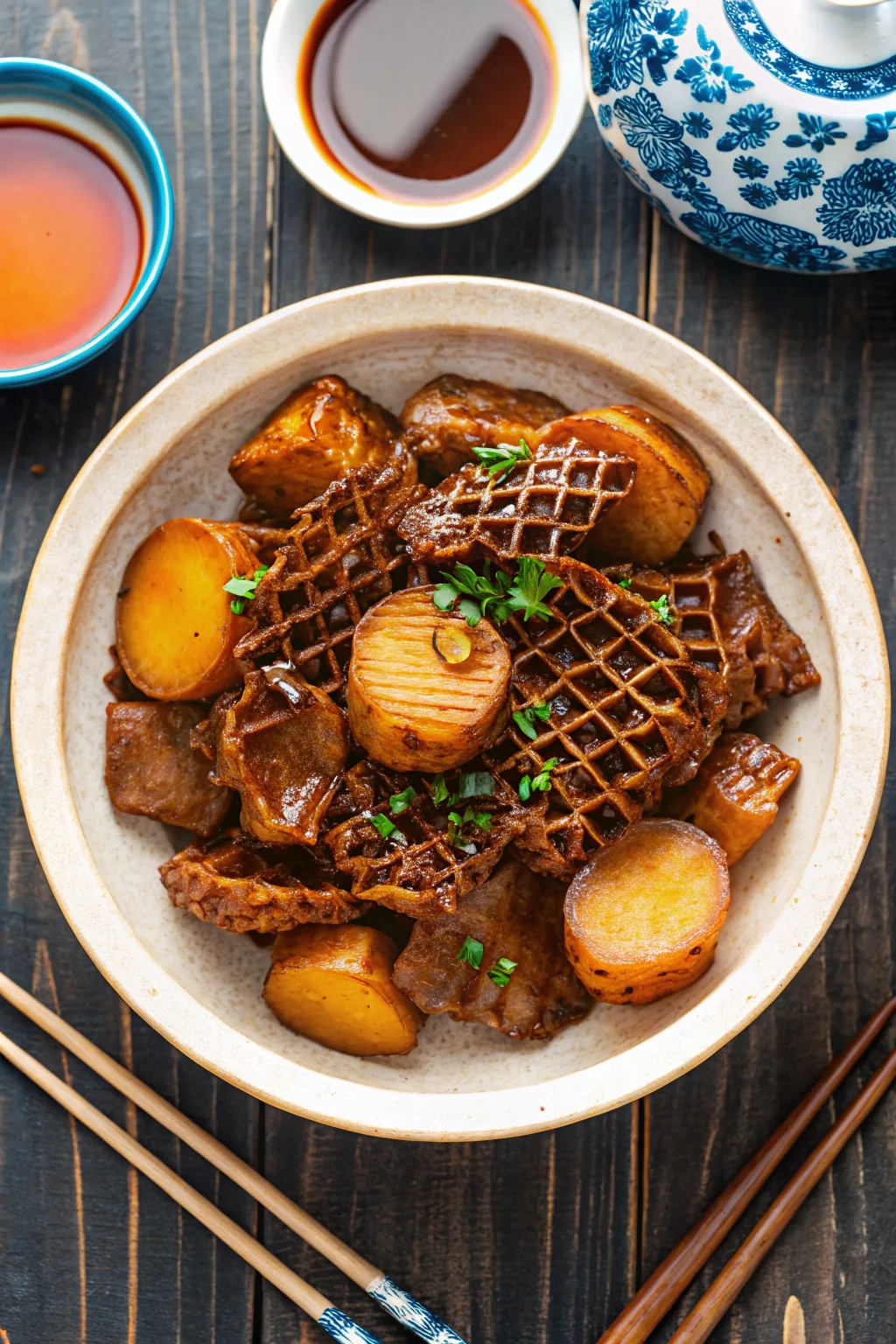
At RecipeSwaps, we tackle ingredients that others find intimidating. Today’s focus is on beef honeycomb tripe, a cut that promises incredible flavor when handled correctly. Many cooks are hesitant to prepare it, but this guide will give you the confidence to master it. We’re providing a complete method for transforming this ingredient from a culinary question mark into a star. Following these steps ensures you’ll create a rich and deeply satisfying beef honeycomb tripe dish every single time.
Why You Should Be Cooking with Beef Honeycomb Tripe
Hi there! I’m Scarlett Thompson. My culinary journey began in my grandmother’s kitchen in Portland, where she taught me that overlooked ingredients often yield spectacular results. Her philosophy was about respecting the food, and that’s the approach I bring to this recipe for beef honeycomb tripe. Learning to cook beef honeycomb tripe connects you to a more traditional, nose-to-tail way of cooking.
This specific cut, from the cow’s second stomach, has a unique honeycomb pattern that is perfect for soaking up flavorful sauces. While its raw appearance might be unusual, its potential is immense, making beef honeycomb tripe a truly special ingredient. The flavor of beef honeycomb tripe is mild on its own, but its famous texture becomes wonderfully tender after a slow braise. Consider this your essential guide to building kitchen confidence with this amazing cut, which is a favorite in my collection of beef recipes. Mastering it is a skill worth having, and this guide from our ingredient guides will show you how.
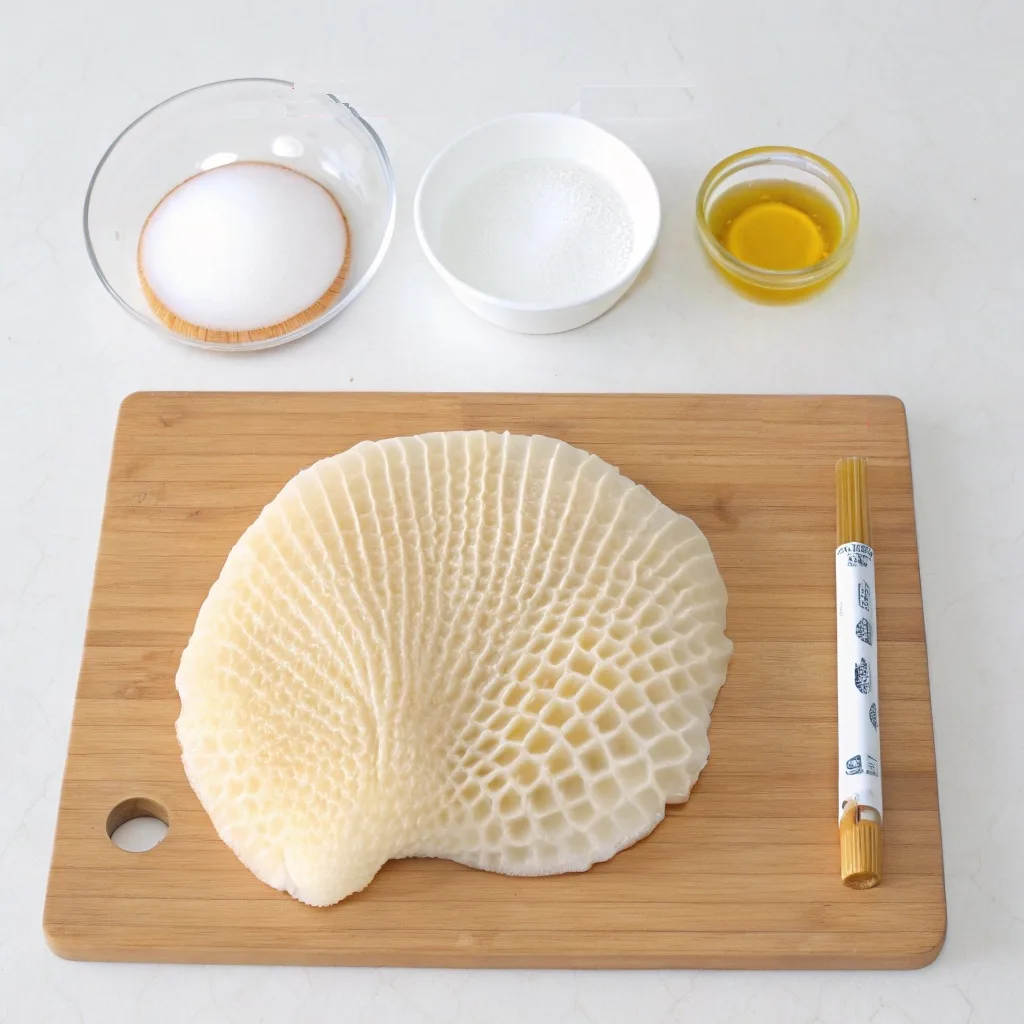
The Non-Negotiable Step: Cleaning Tripe Correctly
Let’s be direct: if you don’t clean your beef honeycomb tripe properly, the dish will fail. This stage is the most critical part of the process, as it removes any residual impurities. Getting this right is what makes the difference between an amateur attempt and a professional-quality meal. This foundational technique for preparing beef honeycomb tripe is straightforward and pays off tenfold in the final taste, much like making a good stock for our soup and stew recipes.
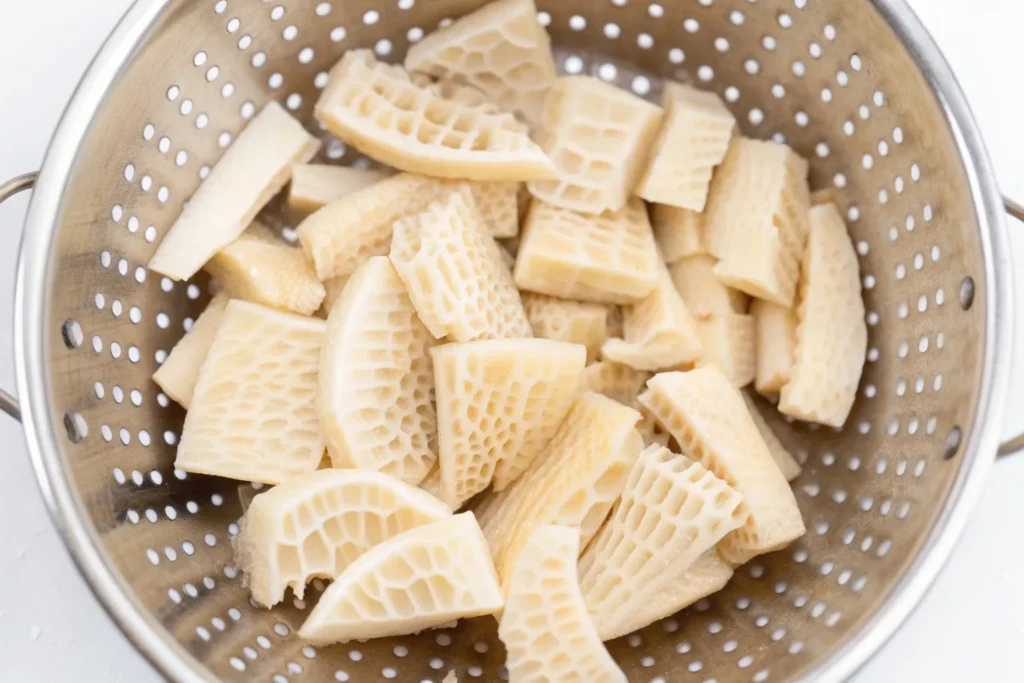
To begin, you will perform a series of aggressive salt scrubs. Rub the entire piece of beef honeycomb tripe with salt, then rinse it with very hot water; repeat this at least five times. Next, use the back of a knife to scrape the surface, removing any lingering film. After that, wash it with vinegar to denature any remaining impurities, then rinse it off completely. The final purification step is blanching the beef honeycomb tripe. Submerge it in a pot of boiling water with ginger and Shaoxing wine for 15 minutes. This step, common in many slow cooker recipes, both cleans and tenderizes the meat. After this, your beef honeycomb tripe is perfectly prepped and ready for cooking.
Building a Deeply Savory Braising Liquid
With the tripe perfectly prepped, we can focus on building its flavor. The goal here is to create a complex, aromatic, and deeply savory sauce that the beef honeycomb tripe will absorb. We start by making a robust beef broth from scratch by simmering bones with aromatics. This homemade broth provides a rich body that you simply cannot get from a store-bought product. It’s the secret to many outstanding main courses.
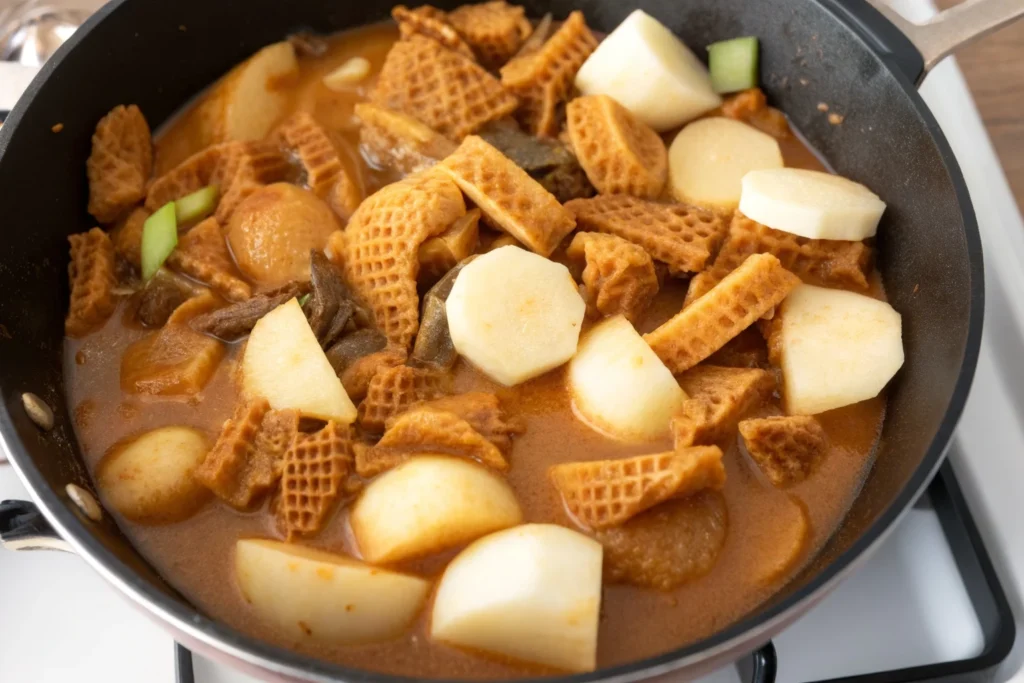
For the braising sauce itself, you’ll heat oil and bloom a fragrant paste of red fermented bean curd, chu hou paste, and peanut butter. This creates a powerful flavor base. Sauté your aromatics like garlic and ginger, then deglaze the pan with Shaoxing wine, lifting all the flavorful bits from the bottom. From there, you will add your primary seasonings: oyster sauce, dark soy sauce, and spices like star anise. This layering of umami, sweet, and spiced notes is a classic technique found in much of Asian cuisine. Finally, the cleaned tripe goes into the pot. You’ll toss it to coat thoroughly before adding the beef broth and letting it begin its long, slow simmer towards tenderness.
Finishing, Serving, and Storing Your Dish
The final stage is where the dish comes together. After hours of simmering, the beef honeycomb tripe will be tender and infused with flavor. During the last ten minutes of cooking, reintroduce the reserved daikon chunks to the pot. This allows them to heat through and soak up the delicious sauce without turning to mush. To serve, ladle the tripe and sauce into bowls and garnish with something fresh and sharp, like chopped cilantro or spring onions, to contrast the richness. This dish is a showstopper for family dinners, where it’s guaranteed to start conversations.
Leftovers are fantastic, as the flavors deepen overnight. Store the cooled tripe in an airtight container in the refrigerator for up to four days. Reheat gently on the stovetop. For a creative twist, you can serve smaller portions of this rich stew as one of your appetizers at a dinner party. Nutritionally, beef tripe is a powerhouse, loaded with protein, vitamin B12, and zinc. While it’s a healthy choice, it should be enjoyed as part of a varied diet.
Frequently Asked Questions
Is beef tripe healthy to eat?
Absolutely. Beef tripe is a nutritious food, offering high-quality lean protein, vitamin B12, selenium, and zinc. It is low in fat, but as it contains cholesterol, it’s best consumed in moderation within a balanced diet.
How to clean beef honeycomb tripe?
Proper cleaning is essential. The process involves five rounds of scrubbing with salt and rinsing with hot water, scraping the surface with a knife, washing with vinegar, and finally, blanching it for 15 minutes in boiling water with aromatics like ginger.
What does tripe taste like?
Tripe itself has a very mild, almost neutral flavor. Its value comes from its unique, chewy texture and its incredible ability to absorb the flavors of the sauce it’s cooked in. When braised correctly, it becomes exceptionally tender.
Is beef tripe good for dogs?
Plain, raw green tripe is an excellent supplement for a dog’s diet, as it’s full of digestive enzymes and probiotics. However, this specific recipe is for humans only. Never feed your dog this cooked dish, as garlic, onions, salt, and other seasonings are toxic to them
Conclusion
Tackling beef honeycomb tripe is a rewarding kitchen project that connects you with time-honored cooking traditions. This guide has given you the definitive method for cleaning, braising, and serving this incredible ingredient. By respecting the process and using quality ingredients, you can create a dish that is not just food, but a memorable experience. I encourage you to step out of your comfort zone and add this recipe to your culinary repertoire.
Print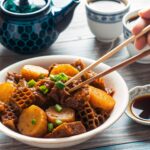
Beef Honeycomb Tripe
- Total Time: 225
- Yield: 6 1x
Description
This recipe transforms beef honeycomb tripe into a tender, deeply flavorful dish. Through a careful cleaning process and a long, slow braise in a rich, savory sauce, the tripe becomes succulent and absorbs all the wonderful aromatic flavors.
Ingredients
For the Beef Broth:
1 kg beef bones
1 tsp white peppercorns
2.5 L water
30 g ginger, lightly smashed
3 sprig spring onions, tied into a knot
1 tbsp Shaoxing rice wine
1 daikon
For Cleaning the Tripe:
1 kg honeycomb tripe
20 tsp salt
1/4 US cup vinegar
20 g ginger
2 tbsp Shaoxing rice wine
Hot water
For Braising:
3 cubes red fermented bean curd (plus 1 tbsp of its liquid)
2 tbsp chu hou paste
2.5 tbsp sugar
1 tsp salt
3 star anise
2 dried tangerine peels
3 slices ginger
4 tbsp cooking oil
3 tbsp oyster sauce
1/2 tbsp dark soy sauce
2 tbsp Shaoxing rice wine
1 tbsp sesame oil
1/2 tbsp peanut butter
3 cloves garlic
3 sprig spring onion, tied into a knot
2.5 US cup beef broth (from above)
Instructions
1. Making the Beef Broth:
2. Blanch the beef bones in boiling water for 2 minutes, then rinse them.
3. In a fresh pot, bring 2.5L of water to a boil. Add the blanched bones, peppercorns, ginger, Shaoxing rice wine, and spring onions.
4. Simmer gently with the lid partially on for 1 hour, skimming any scum. Remove bones and aromatics.
5. Peel the daikon and cut it into 10cm chunks. Simmer in the broth for 5 minutes, then remove and set aside.
6. Preparing The Tripe:
7. Rub the tripe with 4 tsp of salt and rinse with hot water. Repeat this process 5 times.
8. Use a knife to scrape the tripe’s surface to remove any scum, then rinse.
9. Pour vinegar over the tripe, knead it in, and then rinse thoroughly.
10. Bring a pot of water to a boil with Shaoxing rice wine and ginger. Blanch the tripe for 15 minutes, then drain.
11. Braising the Tripe:
12. In a large pot or wok, heat the cooking oil. Add the red fermented bean curd, chu hou paste, and peanut butter, and cook until fragrant.
13. Add garlic and ginger, then deglaze with Shaoxing rice wine.
14. Stir in the oyster sauce, dark soy sauce, sugar, salt, star anise, and tangerine peels.
15. Add the cleaned tripe and toss to coat completely in the sauce.
16. Pour in the beef broth and add the knotted spring onions. Bring to a simmer, then reduce heat to low, cover, and cook for 2-3 hours, or until the tripe is tender.
17. Add the reserved daikon chunks during the last 10 minutes of cooking.
18. Stir in sesame oil before serving. Garnish with fresh chopped spring onions or cilantro.
Notes
Make sure to be thorough when cleaning the tripe; this step is crucial for the final taste.
The braising time can vary depending on the tripe. Check for tenderness after 2 hours.
This dish tastes even better the next day, as the flavors have more time to meld.
- Prep Time: 45
- Cook Time: 180
- Category: Main Course
- Method: Braising, Simmering
- Cuisine: Asian
Nutrition
- Serving Size: 1 cup
- Calories: 350
- Sugar: 5g
- Sodium: 850mg
- Fat: 20g
- Saturated Fat: 8g
- Unsaturated Fat: 10g
- Trans Fat: 1g
- Carbohydrates: 8g
- Fiber: 2g
- Protein: 35g
- Cholesterol: 220mg
